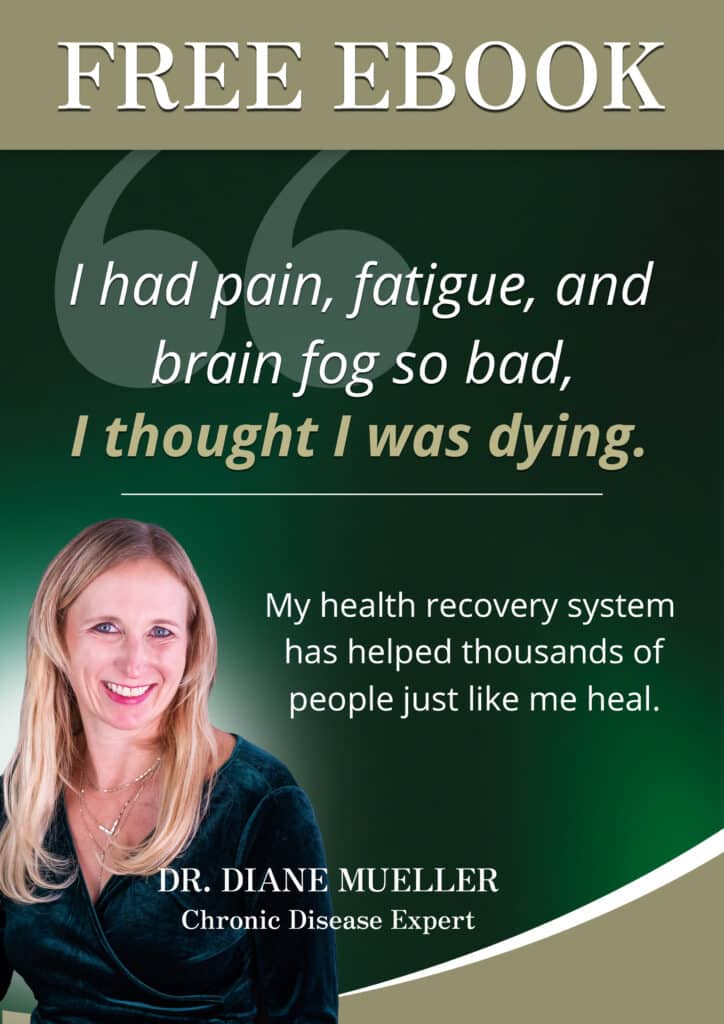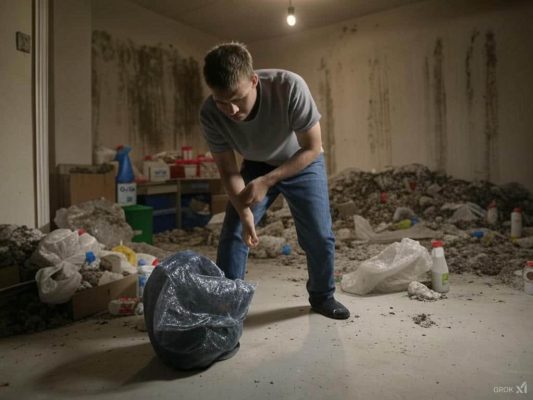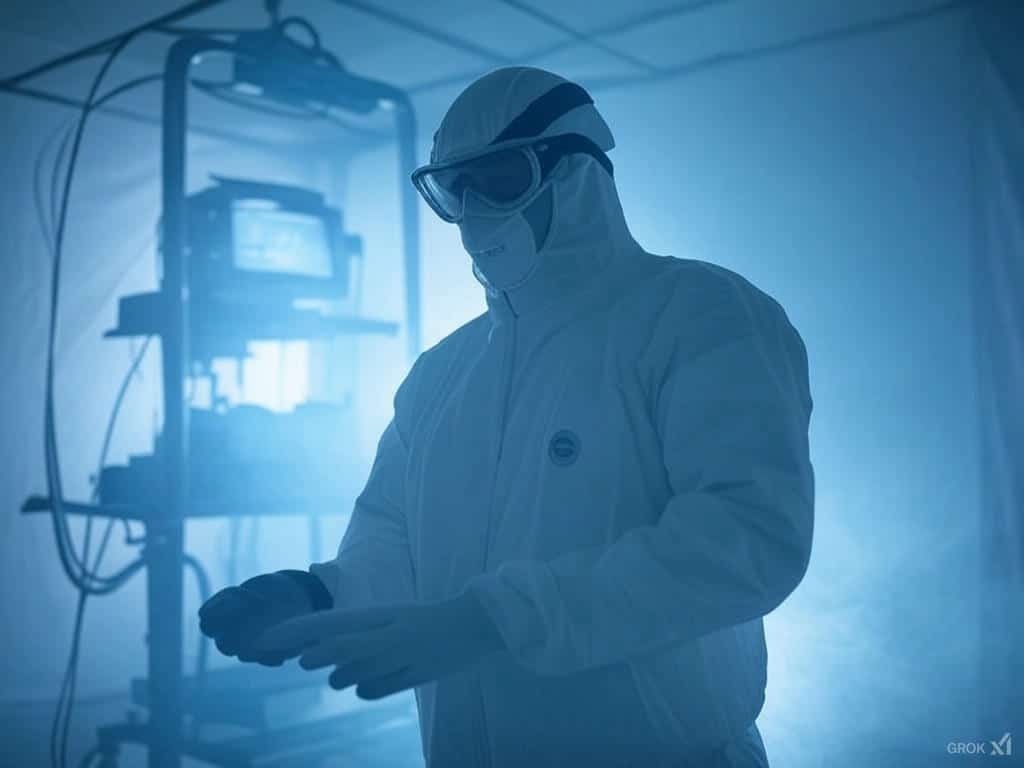
Written by Dr. Diane Mueller
Discovering mold in your home can be overwhelming, but tackling it yourself might seem cost-effective. However, DIY mold remediation isn’t as simple as grabbing a bottle of bleach or vinegar and scrubbing away. Without proper knowledge and precautions, you could unintentionally spread mold spores, worsening the problem and potentially impacting your health.
DIY mold remediation can be cost-effective but requires thorough knowledge and precautions to avoid worsening the issue or health risks.
Improper containment, cleaning methods, and lack of protective gear are common DIY mistakes that can spread spores and lead to health problems.
Mold exposure poses serious health threats, including respiratory irritation, neurological symptoms, and long-term immune damage.
Effective remediation involves proper containment practices, protective equipment, and addressing moisture sources to prevent regrowth.
Professional guidance is essential for extensive contamination, recurring mold issues, or health-sensitive scenarios to ensure complete elimination and prevent future outbreaks.
Regular inspections, moisture control, and staying informed about mold risks and prevention can help protect your home and health in the long term.

Mold thrives in moist environments, and removing it requires more than surface cleaning. From sealing off the affected area to using the right tools and techniques, every step matters to ensure the mold is eliminated safely. This article will guide you through the essential steps of DIY mold remediation while highlighting the risks and precautions you need to consider. Whether dealing with a small patch or a more significant issue, understanding the process is key to protecting your home and health.
If you attempt to tackle mold removal yourself, you will take a big risk. A lack of proper containment and handling strategies can lead to unseen health issues and property damage.
Disturbing mold without proper precautions allows its spores to disperse into the air. These microscopic particles can spread widely, landing on surfaces throughout your home and creating new colonies. Mold, when stressed, reacts defensively by releasing more spores. For example, applying bleach or vinegar to a mold colony can trigger this defensive response.
Inhaling mold spores can lead to respiratory irritation, allergic reactions, or even mold toxicity. For individuals with compromised immune systems or mold sensitivities, symptoms may include chronic fatigue, inflammation, or difficulty breathing. Rooms affected by spore release may also trap airborne particles, exacerbating exposure risks over time.
DIY mold removal attempts frequently fail due to improper techniques or tools. Common mistakes include:
misusing household cleaners: Bleach or vinegar might seem like affordable solutions, yet these often fail to eliminate mold entirely and instead provoke spore release.
Neglecting containment measures: Disturbed spores can move through vents or open doors without sealing off the remediation area, contaminating nearby regions.
Insufficient protective gear: Few DIYers use respirators, gloves, or protective suits to avoid spore inhalation or skin contact.
Failing to address moisture sources: Mold thrives in humid conditions. Addressing visible mold without repairing water leaks or improving ventilation permits regrowth.
Incomplete removal: Partial cleanup efforts leave fragments or residues behind, impacting immune systems even after mold dies.
Every mistake compounds risk, often making professional intervention a needed step later.
We have helped thousands of people restore their health and quality of life by diagnosing and treating their Mold Illness.
When left unchecked, mold poses serious risks to health and property. It can trigger various health problems (and cause structural damage to a home if left unchecked)
Mold exposure can have hidden and long-term health impacts, often going beyond the well-known allergic reactions. Mold releases allergens, irritants, and mycotoxins, compromising respiratory and neurological health. For instance, inhaling mold spores may lead to coughing, wheezing, or asthma exacerbation. These effects can occur even if you don’t notice immediate symptoms.
Chronic exposure increases the risk of developing sinusitis or persistent rhinitis. Over time, mold toxins might impact the immune system and contribute to inflammation, making recovery more complex. Even without visible mold, you can experience adverse effects in spaces with poor ventilation or unnoticed moisture.
Specific individuals face higher risks, particularly those with existing lung issues, compromised immunity, or sensitivities to environmental toxins. Mold can worsen minor problems, such as sore throats or sinus pressure, and become debilitating. Recognizing these extended symptoms is essential to preventing long-term health damage.
To effectively address mold contamination and minimize health risks, you must follow precise steps and employ safe practices. Inadequate methods can worsen mold spread and increase exposure to harmful spores.
Containing the affected area prevents spores from dispersing into clean spaces. Professionals typically use vapor barriers and negative pressure systems, which you can mimic in a DIY setting with thorough preparation. Set up plastic sheeting to seal off doors, vents, and openings. Use a fan and HEPA filter to create negative pressure, ensuring air flows inward rather than outward. This step stops mold particles from contaminating other areas of your home, especially during removal.
Removing active mold requires precision to avoid increasing exposure. Always wear protective gear, such as gloves, goggles, and an N95 respirator. If mold often penetrates deeply, remove porous items like drywall and carpeting if heavily affected. Place contaminated materials immediately into heavy-duty, sealed trash bags to avoid spore escape. Non-porous surfaces can be cleaned with mold-killing solutions like vinegar, hydrogen peroxide, or baking soda, but thorough scrubbing and attention to affected areas are essential.
Mold fragments and spores linger even after the visible mold is removed. These microscopic particles can still trigger immune reactions and allergic responses. After clearing the contaminated area, wipe down all surfaces meticulously with adhesive or electrostatic cloths that capture tiny fragments. Unlike standard cleaning methods, which may redistribute particles, these specialized cloths ensure proper removal and reduce airborne debris.
Fogging the containment area with an antifungal agent further ensures spore elimination. This process covers hidden crevices, gaps, and undersides of surfaces that may harbor residual mold. After fogging, wipe down walls, furniture, ceilings, and floors with damp cloths to remove residue left behind. These additional steps prevent regrowth by removing unseen contaminants that cleaning alone may fail to address.

Professional mold remediation provides expertise and resources that DIY efforts often lack. It’s essential when dealing with widespread contamination or recurring mold issues.
Professional services reduce the risk of mold spreading to unaffected areas. Experts contain contaminated spaces with specialized methods like plastic barriers and negative air pressure systems. These measures, paired with HEPA air scrubbers, capture airborne spores and ensure they don’t spread within your home.
Trained professionals also more effectively address potential health risks. Mold exposure to toxic varieties like Stachybotrys chartarum can worsen respiratory problems or cause severe allergic reactions. If left untreated, exposure might lead to neurological symptoms or immunosuppressive effects. Unlike DIY cleaning, professional remediation focuses on eradicating the issue at its source, significantly lowering these health risks.
Professionals use advanced equipment to identify moisture sources behind mold growth. Infrared cameras detect hidden leaks, while moisture meters measure humidity in surrounding materials. Fixing the moisture problem can prevent future outbreaks.
Incomplete or incorrect DIY remediation often leads to costly mold regrowth, requiring additional intervention. Hiring experts ensures the removal of mold down to microscopic spores. EPA-certified antimicrobial treatments sanitize affected surfaces and improve indoor air quality, saving you from expensive structural damage or prolonged health expenses later.
After completing the initial mold remediation steps, proper safety measures protect health and property. Regular monitoring, combined with professional guidance, creates a comprehensive protection strategy.
Professional mold inspectors evaluate remediation effectiveness through specialized testing methods. Schedule an inspection when visible mold covers more than 10 square feet or after experiencing persistent respiratory symptoms. Certified inspectors use moisture meters, thermal imaging cameras, and air quality testing to detect hidden mold colonies behind walls or under flooring.
DIY mold removal can be risky without proper knowledge and equipment. Disturbing mold colonies release thousands of spores that can spread to new areas and cause health issues. It’s generally safer to consult professionals, especially for areas more significant than 10 square feet or when dealing with toxic mold species.
Professional mold remediation involves strict containment protocols, specialized equipment, and precise cleaning techniques. They use vapor barriers, negative air pressure systems, HEPA filtration, and anti-fungal treatments. Professionals also employ infrared cameras and moisture meters to detect hidden mold colonies.
Professional mold removal is more effective because experts use industrial-grade equipment, follow established protocols, and have specialized training. They ensure proper containment, prevent cross-contamination, and address underlying moisture issues. They also provide documentation necessary for insurance claims and property transactions.
Call a professional inspector if visible mold covers more than 10 square feet, you experience persistent respiratory symptoms, or smell must at home. Also, consider professional help after water damage or concerns about hidden mold growth.
Tackling mold yourself requires careful planning and strict adherence to safety measures. While DIY mold remediation can be effective for small areas, larger infestations or recurring issues often demand professional expertise to ensure thorough removal and long-term prevention.
Your health and home are worth protecting, so don’t hesitate to seek help when necessary. By staying informed and proactive, you can effectively address mold problems while minimizing risks to your well-being and property.
We have helped thousands of
people restore their health
and quality of life by diagnosing
and treating their Lyme Disease.
Managing a Herxheimer reaction effectively can make the detoxification process more tolerable. By staying hydrated, supporting liver function, adjusting treatment intensity, and prioritizing rest, you can minimize discomfort while allowing your body to heal.
Stay Hydrated
Proper hydration helps flush out toxins and prevents dehydration caused by fever, sweating, and increased urination. Drink water, electrolyte-rich beverages, or clear fluids like herbal teas and broths. Severe cases may require IV therapy to restore hydration levels.
Support Liver Detoxification
The liver plays a key role in detoxification, so support it with whole, organic foods and liver-friendly options like garlic, dandelion, and milk thistle. Supplements like NAC and glutathione can further enhance detox pathways, reducing the severity of symptoms.
Adjust Treatment Intensity
If symptoms become overwhelming, reduce the dosage or frequency of antimicrobial treatments under medical guidance. Balancing treatment intensity with your body’s detox capacity helps manage reactions without hindering progress.
Prioritize Rest and Sleep
Rest and sleep are essential for recovery, as the body expends energy fighting pathogens and processing toxins. To support detoxification and immune function, create a calming bedtime routine, avoid stimulants, and ensure a comfortable sleep environment.
By implementing these strategies, you can reduce the intensity of Herxheimer reactions and support your body’s natural healing processes.
Managing a Herxheimer reaction during refresh involves strategies that reduce symptoms while supporting the body’s natural healing processes. Natural remedies, including heat therapy, anti-inflammatory foods, and targeted supplements, can help ease discomfort and promote recovery.
Heat therapy, such as dry sauna, steam sauna, or infrared sauna, enhances toxin elimination through sweating. While endotoxins aren’t excreted via sweat, heavy metals and volatile organic compounds (VOCs) can be, reducing the detoxification burden on the liver. This method also alleviates joint and muscle aches, common symptoms of a Herxheimer reaction. Avoid heat therapy if you feel weak, dizzy, or have a fever, which may worsen symptoms or lead to dehydration.
Incorporating anti-inflammatory foods into your diet can help mitigate Herxheimer’s symptoms. They reduce inflammation and support detoxification, whether added to meals or consumed as tea, turmeric, ginger, and cinnamon. Antioxidant-rich foods like green leafy vegetables and dark-colored berries also combat oxidative stress caused by endotoxins. These foods not only ease symptoms but also enhance overall refresh pathways.
Supplements are essential in managing Herxheimer reactions by supporting detoxification and reducing symptom severity.
Binders like activated charcoal from coconut shells absorb toxic byproducts released during microbial die-off. They help ease symptoms by preventing these toxins from recirculating in the bloodstream. Using binders during refresh can significantly reduce the intensity of a Herxheimer reaction.
Probiotics, particularly those with 100 billion CFUs, repopulate the gut with beneficial bacteria, restoring microflora balance and improving digestion. An overgrowth of harmful bacteria, such as Candida or SIBO, can exacerbate Herxheimer symptoms by causing leaky gut and systemic inflammation. Probiotics help counteract these effects, promoting a healthier gut environment.
A Herxheimer reaction, often called a “herx,” typically begins within 24 to 72 hours after starting a treatment or refresh protocol. Symptoms, which can include fever, chills, muscle pain, and fatigue, usually last from a few days to a few weeks. In most cases, the reaction resolves within 3 to 7 days, though the duration can vary depending on individual factors.
The length and intensity of a Herxheimer reaction depend on several variables. These include the severity of the underlying infection, the therapeutic dosages used, and the body’s ability to process and eliminate toxins. Due to their complex nature, conditions like Lyme disease or coinfections often result in longer-lasting reactions. Your overall health, immune system response, and detoxification capacity determine how long the reaction persists.
“Dr. Mueller’s approach to medicine is refreshing! There is only so much you can do with western medicine and in my life I was needing a new approach. By addressing the whole body, nutritional diet factors, environmental factors, blood work, and incorporating ideas I had not previously known, I was able to break through with my conditions. I am not only experiencing less pain in my life, but through the process of healing guided by Dr. Diane Mueller, I am now happy to say I have more consciousness surrounding how I eat, what to eat and when things are appropriate. Living by example Dr. Mueller has a vibrancy that makes you want to learn and know more about your body and overall health. I highly recommend her to anyone looking for new answers, a new approach to health, or in need of freedom from pain and limitations.”
-Storie S.
Kihei, HI
We have helped thousands of people restore their health and quality of life by diagnosing and treating Mold Toxicity
